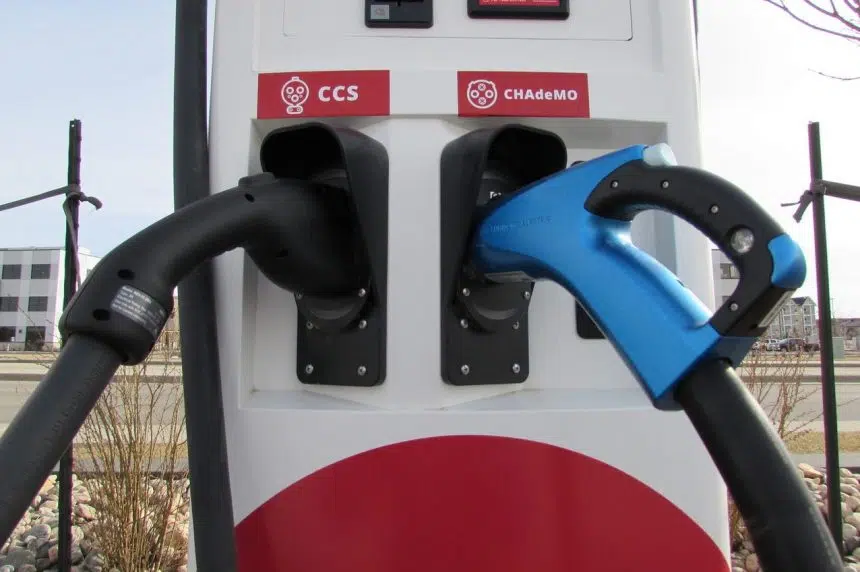Malcolm Lucy said a stalled vehicle isn’t something he has to worry about, even in the extreme cold Saskatchewan often sees in the winter.
The Saskatoon resident drives a Tesla Model 3 that he bought in October 2018.
“I love it. Even if you aren’t environmentally conscious … there are so many other advantages,” Lucy explained, “namely, no gasoline.”
Electric vehicles (or EVs) have some other perks too when it comes to winter operation, Lucy said.
“They don’t spew smelly exhaust into your garage, especially in wintertime when you really smell exhaust fumes,” he said.
EVs don’t have an engine, instead relying on a battery. That prevents them from stalling because Lucy said they don’t have to start up like a vehicle powered by fuel.
“It’s not moving but it’s still somewhat on in a certain way (when it’s stopped),” Lucy explained.
If a car is left out in very cold temperatures but has at least a moderate charge — “at least 10 to 20 per cent,” Lucy said — it’s not likely the car will die outside overnight.
It’s possible someone could wake up to a dead EV if it had a lesser charge, but Lucy said that isn’t likely, especially if they have the ability to charge their vehicle at home and monitor their vehicle’s power.
Lucy himself has his own charging station at home. For EV owners who live in an apartment or condo building, however, that could be a more challenging winter consideration, he said.
Like gasoline-powered rides, electric vehicles use more power in the wintertime. That’s needed to warm up the vehicle cabin and battery to drive.
But the increase in energy use because of frigid temperatures can see EV drivers have less power “devoted to propulsion,” which Lucy said means less energy for actual driving.
Depending on how cold it is outside, that can translate into fewer kilometres driven per full charge for a vehicle. Lucy said the shorter expected distance is different from gasoline vehicles.
“You don’t notice that range drop in a gasoline car because so much of it is lost in other ways already,” he said. “At cold temperatures, you notice it so much more (in an EV) because that energy loss really hinders your (energy dedicated for) propulsion.”
The drop in range can go from about five per cent in mild cold temperatures to as much as 50 per cent in temperatures that dip below the -30 C range.
Lucy said most EVs have a range of at least 300 kilometres on a full charge. Those vehicles might see their expected distance on a full charge drop to 150 km in the winter.
Lucy’s vehicle has a 500-km range, so a single charge will carry him further, even in the cold.
“For daily commuting for most people, this would not be an issue,” Lucy said. “For highway driving, it’s a consideration.”
Other factors like a significant headwind could further limit an EV’s distance in the extreme cold.
Someone travelling on the highway might need to adjust their trip planning to account for needing a charging station sooner along their route and more frequently, depending on their length of travel.
Lucy said most chargers on major highways from Saskatoon to Edmonton or Regina would still be viable distances away, but further distances between chargers on less major highways would be something to be aware of.
That’s not a deterrent for Lucy.
He said his vehicle is fun to drive and has a lot of “bells and whistles.” The quick acceleration and quiet ride make driving much more enjoyable, he said.
“I would never go back to a gasoline car, never,” he said.
Lucy first became excited about EVs after seeing the innovation happening within the field.
“I’m an environmentalist at heart,” he said, “so the appeal of weaning myself off from fossil fuels, at least when it comes to transportation, was an appealing one.”











